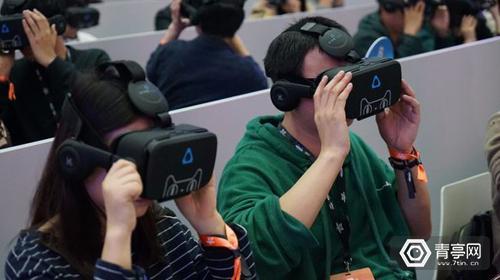
In 2016, China’s virtual reality industry ushered in a good start, with VR head-mounted shipments of approximately 300,000 units, making China the world’s second-largest market for virtual reality, accounting for approximately 15% of the global market share.
HTC holds the top spot, accounting for 18% of the Chinese VR headline market (see definition below). HTC's Vive head unit has shipped more than 50,000 units in China. Local manufacturers followed closely and occupied 17% of the market. Da Peng launched two head-mounted products in the Chinese market and competed with HTC for market share. In 2016, about 70% of Big Bang’s shipments came from its M2 Smart VR Headset.
"HTC needs to continue to enter the B2B market to ensure market leadership. HTC not only released high-quality products, but is also striving to create a successful VR ecosystem by encouraging start-ups and content manufacturers to design attractive user experiences. "The VR products are icing on the cake," said Canalys analyst Liu Jiansen. “At present, Da Peng and Samsung have entered into a cooperative relationship, from Samsung to Da Peng to provide M2 ​​silicon and display. With this advantage, Da Peng is continuously catching up with HTC in the Chinese market. The partnership between Samsung and Samsung is It is important to maintain a good VR experience while reducing the cost of purchasing VR systems."
For local VR vendors, 2017 is a challenging year. Currently, limited access to resources and inability to make bold decisions will continue to threaten VR startups that rely on financing. At the same time, these enterprises are also facing the dual pressure of increasing revenue and improving profitability. "With a more stable financial position, HTC can allow channel and ecosystem partners to believe HTC's long-term development," said Liu Jiansen. “Today, companies such as DaPeng and 3Glasses have successfully attracted corporate buyers, not just the consumer market. They need to start building their own ecosystems and let developers create unique application examples to give business buyers confidence.â€
Due to its focus on the consumer market and fewer PlayStation 4 user groups, Sony’s VR headsets have shipped less than 30,000 units. Although in many other markets, Sony VR headline has been leading the way, but it is only fourth in the Chinese market. "In order to expand the demand for PlayStationVR in the Chinese market, Sony must ensure the simultaneous launch of AAAVR content in China and other countries," said Liu Jiansen.
VR headline sales data originated from "Canalys Wearable Devices and Virtual Reality Analysis Quarterly Tracking Service." Canalys' definition of virtual reality heads-up is that a device equipped with a head-mounted display allows the wearer to immerse himself in the virtual world. Does not include VR glasses such as Samsung GearVR and Google DaydreamView. Smart VR Headset refers to a multifunctional head-mounted non-portable device that is equipped with an operating system that can run third-party computing applications. Basic VR headsets are head-mounted, non-portable devices that provide a specific set of capabilities and cannot run third-party computing applications on their own, typically through cables to desktop computers.
(Source: Canalys)
Camera Filter,Camera Polarizer Lens,Camera Raw Filter,Lens Filter
Shaoxing Shangyu Kenuo Photographic Equipment Factory , https://www.kernelphoto.com
